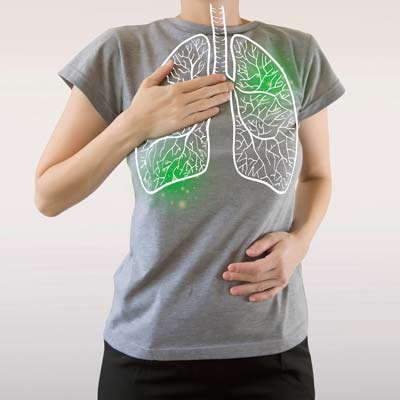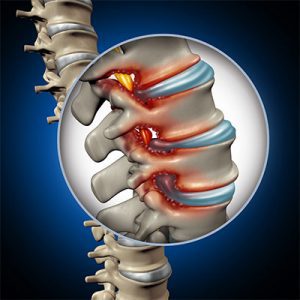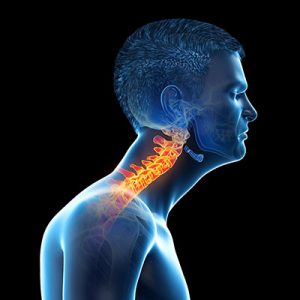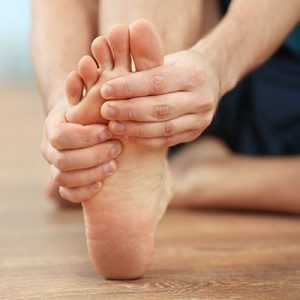Can Chiropractic Adjustments Improve Respiratory Function?
 Do you feel like you’re breathing harder and more frequently than usual? Your body may be having difficulties absorbing and transporting oxygen throughout your body and extremities due to a respiratory function that aids in the delivery of essential nutrients and energy to your cells.
Do you feel like you’re breathing harder and more frequently than usual? Your body may be having difficulties absorbing and transporting oxygen throughout your body and extremities due to a respiratory function that aids in the delivery of essential nutrients and energy to your cells.
Breathing issues are widespread across the world, but chiropractic therapy can help you breathe more freely. Chronic lung illness affects over 35 million Americans each year.
This might include asthma, chronic obstructive pulmonary disease (COPD), emphysema, and chronic bronchitis. Many more individuals battle with their breathing on a daily basis without receiving a medical diagnosis.
Even if your dog has a healthy airway, some physical and emotional factors can compromise breathing. The majority of the time, however, it’s due to a combination of causes: allergies and other environmental pollutants, body structure and weight, anxiety, and digestive problems.
Poor breathing can also be caused by viral and bacterial infections that induce inflammation and an overreactive immune response.
As time goes by, some individuals may not notice that their breathing has gotten worse—rather, they could simply discover that they are frequently exhausted or weary, have brain fog and forgetfulness, or realize that their physical performance (endurance, explosive energy, flexibility, etc.) is declining.
Other times, people may be aware that they have poor breathing but believe it is something they must put up with. The lack of a diagnosis may be due to a previous illness, a known genetic or congenital condition, or simple devolution of one’s health over time.
See More: Chiropractor Virginia Beach
Your health relies on the quality of your breathing.
The function of every body system is enhanced by breathing.
Respiration is an “all or nothing” process—you’re either breathing or you aren’t. It’s true that if you cease breathing, your body will be unable to maintain life, however, the quality of your breathing has an impact on the performance of your bodily systems as well as any unanticipated events that may occur during the day. In other words, although you may be breathing enough to survive, are you breathing enough to thrive?
Breathing quality is a component that allows individuals to rapidly adjust to an emergency need to run. The body’s ability to absorb oxygen will increase in response to the need for more energy as a result of the physical activity. In addition, all other bodily systems, including the cardiovascular system, immune system, and muscular system, will be completely reliant on oxygen supplied by the respiratory system to generate the energy required to respond to the current activity.
However, not all physical demands need to be fulfilled by running, and not everyone has excellent breathing quality—only activities such as sitting, standing, and working (including in an office or other sedentary role) require effective respiration. The better one’s respiratory quality is, the higher their performance will be in every activity that they undertakes.
Digestion, elimination, sleep, heart rate and rhythm maintenance, cognitive activities like thinking and creating, antiviral immunity, nervous system regulation, and other regular activities all benefit from good breathing. When poor breath is present, each of the body systems that performs these functions is also functioning at suboptimal levels.
Your mood is dictated by your breathing.
It is important to maintain your health, but the quality of your breath also affects your mood. Changes in the amygdala, a portion of the brain that is associated with survival responses (such as fight or flight), show that altering the depth and quality of one’s breathing can cause anxiety, fear, anger, and other feelings without deliberate effort.
On the other side of the matter, research suggests that deliberately attempting to improve one’s breathing and enhance its quality (in the context of breathwork or meditation) has an actual impact on mood, particularly in the prefrontal cortex, which is linked with reasoning and problem-solving. When respiration improves as a result of deeper breathing, people feel better, have improved attention span, and enhanced memory, and are more likely to experience good emotions.
Quality of breathing might improve your life and slow your aging.
Affecting your body’s processes and mood, as well as the efficiency of the bodily functions they control, can directly influence your quality of life. Quality of life may be measured by asking the following questions: how do I feel most often physically? How do I feel most often emotionally? Do you feel prepared to deal with the current and unanticipated problems in your life?
One of many significantly significant elements in determining your life’s quality is the quantity and quality of your breathing, which can all be improved through chiropractic treatment.
How Chiropractic Care Improves the Quality of Your Breathing
Chiropractic can assist you in improving your breathing and determining how much more it might be boosted. Whether you have a diagnosed breathing problem or simply want to know how much more you can improve your baseline level of breathing, chiropractic treatment may help.
Chiropractic treatment may improve the quality of your breathing in a few distinct ways:
Chiropractic care decreases stagnation.
Chiropractic treatment consists of a variety of modalities, but the most common technique is one that involves movement in the body. Bones and joints, muscles and tissues, fascia, skin, ligaments, and tendons might all be involved. The release of stagnation that occurs as a result of any kind of movement throughout the body is one of chiropractic’s most dynamic and beneficial effects.
Chiropractic treatment aims to break up stagnant regions and allow the release of toxins and cellular waste from these sites by shifting areas and layers of the body that may not be addressed frequently, or have been “stuck” in a specific posture due to posture, lifestyle, or injury. This gives significant assistance to the respiratory system’s work of transporting nutrients and oxygen across the body, as well as any areas that might be blocked or stagnant.
Chiropractic care increases circulation.
Chiropractic care, like chiropractic treatment for stiffness, increases circulation by the same principle as chiropractic treatment for stagnation. This occurs when previously blocked regions are let go, allowing new blood, lymphatic fluid, and oxygen to inundate the areas that were previously neglected by the body’s systems. These might be found throughout the body in muscles (shoulder, neck, back), bones and joints (across the spine), tissues, ligaments, tendons, etc.
Circulation is improved by receiving chiropractic treatment, which may be delivered in the form of traction, adjustments, manual tissue manipulation, and other methods. Even after the treatment is finished, circulation is enhanced because of improved oxygen and nutrient supply from the lungs to the body.
Chiropractic care helps realign the bones and joints.
What is chiropractic adjustment and how does it help to realign bones and joints in the body? Is there a link between breathing and high-quality breath?
Bones and joints that are misaligned can result in the breakdown of various body processes. The more severe the misalignment, the more likely it is that many bodily functions will be disrupted—particularly nerve function. Nerves in the body are responsible for sending messages to other organs, which may cause hormones and chemicals to be released. When communication between nerves is blocked, breathing is also hampered.
The diaphragm, which controls breathing, is aided by the left and right phrenic nerves in the body. These nerves are located in the spinal cord and might stop operating when there is a fault in alignment.
Chiropractic care decreases pressure on the organs.
Bones may actually compress internal organs in severe cases of misalignment. This is most typical in scoliosis, which happens when the lateral spine develops an abnormal s-shaped curvature.
In some cases, scoliosis can cause the ribcage to contort and collapse on one side of the lungs. This shift, or variations in the lower part of the spine near the diaphragm, can significantly impede breathing function.
Chiropractic care regulates the nervous system.
Chiropractic treatment may help to regulate the nervous system. Nerves that are pinched, compressed, bruised, or severed can begin to heal when bones and joints are adjusted back toward ideal alignment. The connection between areas of the nervous system and the extremities and torso is restored, allowing nerve energy to be dispersed at full capacity once again.
Chiropractic treatment can help to restore the nervous system and regulate it, which is beneficial in decreasing inflammation, relieving pain, and enhancing cognitive function. When the nervous system is regulated, it sends signals to the respiratory system (which operates largely without conscious thought) to establish calm breathing patterns that are reflected in the brain.
Ready to breathe more easily?
An experienced chiropractor can assist you or someone you care about in supporting your breathing or improving breath and respiratory function.
Dr. Samantha Coleman of ChiroSolutions Center is delighted to provide cutting-edge chiropractic therapy in Virginia Beach. If you’re ready to improve the quality of your breathing and support your health and well-being, please call us now.

Similar Posts
Free Initial Consultation
Stop living with pain and discomfort. Contact us for your free initial consultation.
Request an appointment online, or call 757-271-0001







